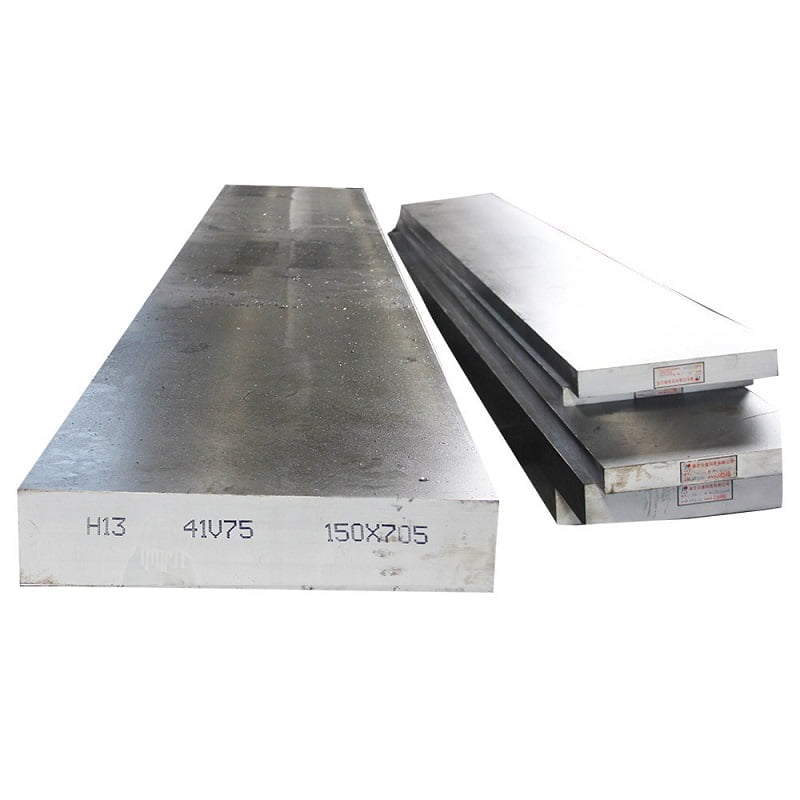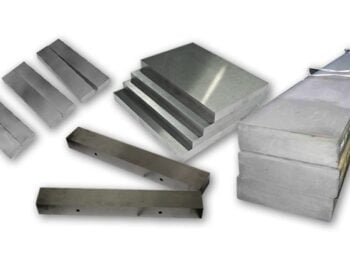

SKD61 그리고 SKD6은 모두 뜨거운 작업 공구 강철의 유형이지만 구성과 특성이 다르므로 다른 응용 분야에 적합합니다.
- 구성: SKD61은 ASTM 및 AISI 표준의 H13 Tool Steel에 해당하는 일본 JIS 표준 HOT Work Tool Steel입니다. 그 구성은 일반적으로 다음을 포함합니다.
- 탄소 (C) : 0.32-0.45%
- 크롬 (CR) : 4.75-5.50%
- Molybdenum (MO) : 1.10-1.75%
- 바나듐 (V) : 0.80-1.20%
- 실리콘 (SI) : 0.80-1.20%
- 속성: SKD61/H13은 높은 인성과 내열성의 우수한 조합으로 유명합니다. 가공성이 우수하고 내마모성이 있으며 약 50-52 HRC로 경화 될 수 있습니다. 알루미늄 및 아연 다이 캐스팅 다이를 만들고 단조 및 압출 다이를 만드는 데 널리 사용됩니다.
SKD6 (H11) :
- 구성: SKD6은 ASTM 및 AISI 표준의 H11 Tool Steel에 해당하는 JIS 표준에 의해 지정된 또 다른 HOT Work Tool Steel입니다. 그 구성은 일반적으로 다음을 포함합니다.
- 탄소 (C) : 0.32-0.42%
- 크롬 (CR) : 4.50-5.50%
- Molybdenum (MO) : 1.00-1.50%
- 바나듐 (V) : 0.30-0.60%
- 실리콘 (SI) : 0.80-1.20%
- 속성: SKD6/H11은 열 피로 크래킹에 대한 탁월한 저항성을 특징으로하므로 고온 및 주기적 가열 및 냉각과 관련된 응용 분야에 적합합니다. 그것은 열처리 후 약 45-50 시간 (약 45-50 시간)을 제공하며 종종 뜨거운 펀치, 다이 캐스팅 다이 및 단조 다이에 사용됩니다.
주요 차이점 :
- 구성: SKD61 (H13)은 SKD6 (H11)에 비해 크롬 함량이 더 높으며, 이는 우수한 내열성 및 인성에 기여합니다.
- 신청: SKD61 (H13)은 다이 캐스팅 다이 및 압출 금형과 같은 더 높은 내열성 및 인성을 요구하는 응용 분야에서 선호됩니다. SKD6 (H11)은 우수한 열 피로 저항성을 위해 선택되어 핫 단조 및 유사한 응용 분야에 적합합니다.
- 경도: SKD61 (H13)은 일반적으로 SKD6 (H11)에 비해 열처리 후 더 높은 경도를 달성합니다.
요약하면, SKD61 (H13)과 SKD6 (H11)은 뜨거운 작업 공구 강철이지만, 조성 및 결과 특성의 차이로 인해 열 저항, 강인성 및 열 피로 저항과 같은 특정 특성이 필요한 다양한 유형의 뜨거운 작업 응용에 적합합니다.




